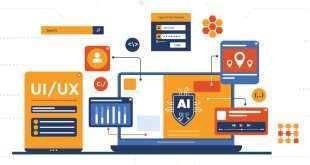In today’s digital age, web accessibility plays a pivotal role in ensuring equal access to information and services for all individuals, including those with disabilities. While considerable progress has been made in enhancing website accessibility, the power of artificial intelligence (AI) is driving a new era of innovation in this domain. In this blog, we delve into the latest advancements in AI-driven web accessibility solutions that are transforming the digital landscape, making it more inclusive and user-friendly.
The Significance of Web Accessibility
Before we delve into the exciting innovations brought about by AI, let’s emphasize the importance of web accessibility. A website that is accessible accommodates users with varying disabilities, such as visual, auditory, motor, or cognitive impairments. Such inclusive design ensures that everyone can perceive, understand, navigate, and interact with the digital content effectively.
Web accessibility not only benefits people with disabilities but also provides advantages for businesses and organizations. It expands the potential audience base, improves search engine visibility, and enhances overall user experience, leading to increased customer satisfaction and loyalty.
AI’s Role in Revolutionizing Web Accessibility
Natural Language Processing (NLP) for Screen Readers
Screen readers have been instrumental in assisting visually impaired users to access online content. However, they have faced challenges in accurately interpreting complex web elements. With the integration of NLP algorithms, AI-powered screen readers can now provide more precise and contextual information, offering a seamless browsing experience for visually impaired users.
AI-Driven Image Recognition and Alt Text Generation
Images have long been a barrier for visually impaired users. AI-based image recognition algorithms can now identify the content of images and automatically generate appropriate alternative text (alt text). This breakthrough has significantly improved the accessibility of visual content, enabling a more inclusive web environment.
Contextual Content Summarization
AI algorithms can now analyze and summarize lengthy web content, providing users with concise and accessible information without compromising the context. This feature benefits users with cognitive disabilities or those who prefer a streamlined reading experience.
Personalized User Interfaces
AI can analyze user behavior and preferences to create personalized user interfaces that cater to individual accessibility needs. From font size and color schemes to layout adjustments, these interfaces adapt to enhance the user experience for each visitor.
Voice User Interfaces (VUI)
With the increasing popularity of voice assistants like Siri and Alexa, AI-powered VUIs are now being integrated into websites, allowing users to navigate and interact through voice commands. This innovation particularly benefits users with mobility impairments, making web browsing more convenient and hands-free.
AI-Driven Automated Testing
To ensure web accessibility compliance, AI-driven automated testing tools are now available. These tools can detect potential accessibility issues and provide actionable suggestions for improvement, streamlining the accessibility testing process for website owners.
Real-time Translation and Transcription
AI-powered translation and transcription services have made multilingual content accessible to a broader audience. These services facilitate real-time translation of web content into various languages, enabling users worldwide to access information in their preferred language.
Gesture and Motion Tracking
AI-based gesture and motion tracking technologies allow users to interact with websites using hand movements or facial expressions. This advancement benefits individuals with motor disabilities, offering them alternative ways to engage with digital content.
Final Words
The fusion of AI and web accessibility is ushering in a new era of inclusivity and usability for the digital world. These latest innovations are breaking barriers and empowering individuals with disabilities to access information and services effortlessly. As businesses and organizations embrace AI-driven web accessibility solutions, we move closer to creating a truly inclusive online environment for all.
Commonly Asked Questions
1. How does AI improve web accessibility for people with disabilities?
AI enhances web accessibility by offering features like NLP for screen readers, automated alt text generation, contextual content summarization, personalized user interfaces, and voice user interfaces, making online content more accessible to individuals with disabilities.
2. Can AI-driven web accessibility solutions be customized for individual needs?
Yes, AI allows for personalized user interfaces that cater to individual accessibility needs. From adjusting font sizes and color schemes to providing alternative ways of interaction, AI can adapt web content to suit each user’s requirements.
3. How does AI assist in testing web accessibility compliance?
AI-driven automated testing tools can detect potential accessibility issues on websites and provide actionable recommendations for improvement. This makes the process of ensuring accessibility compliance more efficient for website owners.
4. Can AI help in translating web content into different languages?
Yes, AI-powered translation services enable real-time translation of web content into various languages, ensuring that users worldwide can access information in their preferred language.
5. How does AI benefit individuals with motor disabilities?
AI-based gesture and motion tracking technologies offer alternative methods of interaction with websites, allowing individuals with motor disabilities to engage with digital content using hand movements or facial expressions.
 webfily
webfily



